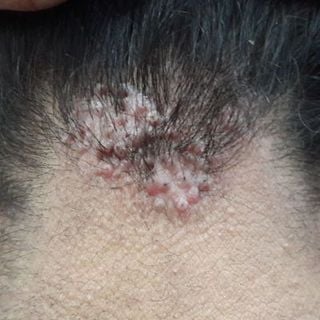Acanthosis Nigricans
Acanthosis nigricans presents as a darkening and velvety thickening of the skin, most commonly affecting the neck, armpits, and groin region. It is most commonly associated with obesity and insulin resistance; people who have acanthosis nigricans are more likely to develop diabetes. In very rare instances, it can be associated with an internal cancer such as stomach cancer.











